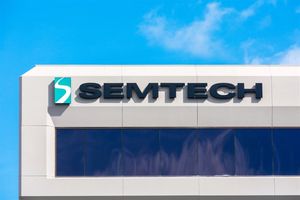COEUR D'ALENE, ID / ACCESSWIRE / March 24, 2022 / Timberline Resources Corporation (OTCQB:TLRS)(TSX-V:TBR) ("Timberline" or the "Company") announce the results today from two core holes from the 6,536-meter (m) 2021 drilling program at its 100%-controlled Eureka Project in Nevada. These include the final assays from drill hole BHSE-220C, a portion of which was previously reported (see Company news release dated February 24, 2022), as well as a deeper core hole (BHSE-206C), drilled to the east of the WWZ to test a major induced polarization chargeability (IP) anomaly (Figure 1) (see Company news release dated February 3, 2021).
The finalized assays from BHSE-220C significantly lengthened the previously reported mineralized interval and slightly improved the grade of the higher-grade portions. The gold zone in this hole is summarized as below:
- 44.2m at 4.10 grams per tonne (g/t) gold from 140.8m depth, including
- 22.9m at 6.24 g/t gold from 140.8m depth; and including
- 12.2m at 9.18 g/t gold from 151.5m depth.
BHSE-206C passed through extensive zones of alteration and low-grade mineralization, including abundant sulfides, carbonaceous material, and brecciation spanning approximately 350m, and identified the probable source of the IP anomaly. Portions of the hole were highly enriched in gold, including an interval of 30.5m of 0.41 g/t gold from 182.0m depth, including 7.6m of 1.04 g/t gold. Significantly, the low-level gold mineralization was accompanied by strong silver content, including 18.3m that averaged 8.96 g/t from 153.0m depth. The hole included multiple additional zones of anomalous gold (86.9m at 0.16 g/t) and enriched silver, zinc, lead, molybdenum, and tungsten that appear to be associated with a propylitically-altered fine-grained quartz-feldspar intrusive rock (aplite). The geometry of the intrusion is impossible to determine yet, but the hole bottoms in at least 131 meters of that unit.
Patrick Highsmith, Timberline's President and CEO commented, "These two holes are significant for very different reasons: one confirms the presence of thick, high-grade Carlin type gold in the Water Well Zone, and the other hole revealed older and deeper silver-gold mineralization that is a likely source of the huge IP anomaly east of the Water Well Zone. When comparing the finalized results for BHSE-220C with the twinned RC hole, it is obvious we have an exciting target on our hands. The zone is over 40 meters thick and cored with significant +10 g/t gold. Best of all, it is open to the northwest, north, and east into the graben where the IP anomaly looms. Results for six reverse circulation holes drilled on the Oswego target, to the east of the IP anomaly, have not yet been received from the 2021 drill program. We are looking forward to exciting results in 2022 as we test these new higher-grade targets."
The cross section shown in Figure 2 shows how the IP anomaly being tested by BHSE-206C may link the mineral systems on the west (Lookout Mountain Resource and WWZ) to deep targets and potentially to the Oswego Trend farther east.
Geological Information from Testing the IP Anomaly
BHSE-206C, a core hole inclined -75° in a northeast direction (azimuth 050°), was designed to test the shallower portion of a large IP chargeability anomaly identified in 2021.
The hole passed through a thick section of limestones - often highly fractured, brecciated, and variably oxidized - that are interpreted to be part of the Ordovician aged Antelope Valley formation (Figure 2). The degree of brecciation and alteration increased with depth as the limestone passed into a chaotic interval of interbedded sanded dolomite (altered) and fine grained felsic intrusive rock with abundant pyrite, which locally exceeds 10%. Gold and silver content correlate with the extent of brecciation and presence of carbonaceous material. Where the dolomite becomes more massive, iron oxide veinlets increase and are associated with low levels of gold and silver mineralization.
Pyrite increases as the drill hole passes into a light-gray to pale-green fine-grained quartz-feldspar intrusion, termed an aplite. The aplite contains rare black biotite phenocrysts and is often cut by discontinuous thin, irregular quartz-potassium feldspar stockwork veinlets. The pyrite content of the aplite is locally high, and gold concentrations are enriched but only to anomalous levels (0.020 - 0.050 ppm).
This sequence of altered sedimentary rocks cut by an intrusion with abundant pyrite, brecciation, carbonaceous material, and elevated gold and silver values provides an explanation for the IP anomaly that occupies this structural corridor. Timberline has previously drilled similar lithologies, alteration and mineralization farther south in this area (See Company news release dated March 25, 2021). In BHSE-206C, the alteration is more intense, the mineralization is higher grade, and the thickness of alteration and intrusive rocks is much greater. This style of alteration and mineralization is most likely associated with older Cretaceous-aged silver (gold) - lead -zinc mineralization that constitutes most of the historical mining in the Eureka District. The Carlin-type gold that has been drilled at the Lookout, WWZ, and Oswego targets is likely younger and Eocene in age.
Superimposed mineral systems are common and considered favorable in larger Carlin-type gold districts. The Ruby Hill - Archimedes Mine (i80 Gold Corp.), north of the Eureka Project, is an excellent example where millions of ounces of Carlin-type gold resources are reported to occur as overprinting earlier silver (gold) - lead - zinc mineralization. Similarly, at least three generations of mineralization are reported in the giant Carlin Trend District. The multiple generations of mineralization may have used the same fluid pathways in the rocks; plus, the earlier stage alteration and mineralization may have enhanced the receptiveness of the host rocks to the later Carlin-type fluids. Timberline plans to explore the area of the huge IP anomaly that lies between the Lookout - WWZ Deposit and the Oswego Target which is ripe for additional discoveries.
Comparative Results from Core and RC Drilling
As previously reported on February 24, 2022, BHSE-220C is a core twin of BHSE-205, which was a reverse circulation (RC) hole. The initial results indicated that core drilling may have recovered significantly higher grades from mineralized intervals than corresponding RC drilling.
This part of the WWZ mineralization is below the water table, which can affect sample quality in RC drilling. Fine-grained material may be washed away during the drilling and sampling process, and drill cuttings may be washed downhole from higher up. Either circumstance could result in under-reporting of gold grades when sampling with RC drilling below the water table. Core drilling is generally regarded as superior to RC drilling for the quality of both assays and geological information, but it is also much more costly.
The initial indication from incomplete and expedited assays was that the core drilling yielded considerably higher-grade gold than did the RC drilling. Now that the complete results are available for BHSE-220C, it is evident that both drill holes encountered a zone of very similar geology and thickness, and the grades over the full interval are significantly higher in the drill core.
Table 1 - Comparison of Average Mineralized Intervals in Twinned* Drill Holes
Hole | Type | Inclination (°) | From (m) | To (m) | Interval (m) | Gold (g/t) |
| BHSE-205 | RC | -90 | 138.7 | 175.3 | 36.6 | 1.06 |
| BHSE-220C | Core | -90 | 140.8 | 185.0 | 44.2 | 4.10 |
| * - Drill holes collared approximately 2 meters apart from same drill pad | ||||||
The additional assays received since the earlier news release were from a lower-grade interval below the previously reported high-grade. Both the RC and core drilling encountered this lower-grade zone, and a direct comparison between the assays in the two drill holes is shown in Figure 3. The overall grade of the core interval also increased slightly from the previous report due to the inclusion of one overlimit assay (a repeat assay on samples that assay above 10 g/t in the initial analysis).
Much of the drilling in the WWZ has encountered significant groundwater inflow during drilling. As previously reported in October 2021, Timberline directed more core drilling of the WWZ during this program to evaluate the reliability of gold grades and increase the confidence of geological interpretations. This newly discovered part of the WWZ is much thicker and higher grade than expected, and it is wide open for follow-up drilling to the north, northwest, and east (Figure 2). The newly reported intercept from BHSE-220C, which is 400m south from this drill hole, confirmed the highest grade and thickness yet drilled in the WWZ (See Company news release dated March 9, 2022).
This phenomenon of drill sampling below the water table is well known in the gold exploration industry, as anecdotal reports and some comprehensive studies have demonstrated higher gold grades from core drilling in comparison to twin RC drill holes. The difference reported here is higher than expected, but this result is from only one pair of twin holes. The data so far suggest that the recent RC drilling in the WWZ may have underestimated the actual gold grade.
The Company continues to assess the geology, assay, and quality control data before drawing conclusions from these data, but plans to twin additional RC holes during 2022. Timberline expects to receive assays for approximately 400 remaining samples, primarily from the Oswego Trend drilling, in multiple batches over the next 4 weeks. In addition, multi-element analysis is underway on approximately 25% of the reported samples and is expected to assist in vectoring towards additional gold mineralization.
Sampling Methodology, Chain of Custody, Quality Control and Quality Assurance
Collection of reverse circulation samples was completed under the supervision of a Company representative. Cutting and sampling of core samples was also directed by Timberline representatives. Personnel from Timberline or the drilling contractors transported the samples to Timberline's secure Eureka facility, from which the samples were picked up by personnel from ALS USA Inc. (ALS) for sample preparation in Elko, Nevada or Tucson, Arizona. Quality control was monitored by the insertion of numerous blind certified standard reference materials, field duplicates, and blanks into each sample shipment. Drill samples were assayed by ALS for gold by fire assay of a 30-gram charge with an AA or ICP-ES finish (ALS code Au-AA23). The overlimits for gold samples assaying above 10 g/t were determined by a 30-gram fire assay with gravimetric finish. Satisfactory results were achieved for all quality control samples related to the data reported herein. In addition, gold mineralized samples were submitted for multi-element analysis (33 elements) by four-acid digestion and ICP-ES determination (code ME-ICP61).
Steven Osterberg, Ph.D., P.G., Timberline's Vice President Exploration, is a Qualified Person as defined by National Instrument 43-101 and has reviewed and approved the technical contents of this release. Dr. Osterberg is not independent of the Company as he is an officer.
About Timberline Resources
Timberline Resources Corporation is focused on delivering high-grade Carlin-Type gold discoveries at its district-scale Eureka Project in Nevada. The Eureka Property includes the historic Lookout Mountain and Windfall mines in a total property position of approximately 24 square miles (62 square kilometers). The Lookout Mountain Resource was reported in compliance with Canadian NI 43-101 in an Updated Technical Report on the Lookout Mountain Project by Mine Development Associates, Effective March 1, 2013, filed on SEDAR April 12, 2013 (see Cautionary Note to US Investors below).
Resource Category | Tonnage | Grade | Grade | Contained Au |
Measured | 3.04 | 0.035 | 1.2 | 106,000 |
Indicated | 25.90 | 0.016 | 0.6 | 402,000 |
Inferred | 11.71 | 0.012 | 0.41 | 141,000 |
The Company is also operator of the Paiute Joint Venture Project with Nevada Gold Mines in the Battle Mountain District. These properties lie on the prolific Battle Mountain-Eureka gold trend. Timberline also controls the Seven Troughs Project in northern Nevada, which is one of the state's highest-grade former gold producers. Timberline controls over 43 square miles (111 square kilometers) of mineral rights in Nevada. Detailed maps and mineral resources estimates for the Eureka Project and NI 43-101 technical reports for its projects may be viewed at http://timberlineresources.co/.
Timberline is listed on the OTCQB where it trades under the symbol "TLRS" and on the TSX Venture Exchange where it trades under the symbol "TBR".
On behalf of the Board of Directors,
"Patrick Highsmith"
President and CEO
Tel: 208-664-4859
Cautionary Note to U.S. Investors: The terms "mineral resource," "measured mineral resource," "indicated mineral resource" and "inferred mineral resource," as used on Timberline's website and in its news releases are Canadian mining terms that are defined in accordance with National Instrument 43-101 - Standards of Disclosure for Mineral Projects ("NI 43-101"). These Canadian terms are not defined terms under United States Securities and Exchange Commission ("SEC") Industry Guide 7 and are normally not permitted to be used in reports and registration statements filed with the SEC by U.S. registered companies. The SEC permits U.S. companies, in their filings with the SEC, to disclose only those mineral deposits that a company can economically and legally extract or produce. Accordingly, note that information describing the Company's "mineral resources" is not directly comparable to information made public by U.S. companies subject to reporting requirements under U.S. securities laws. U.S. investors are urged to consider closely the disclosure in the Company's Form 10-K which may be secured from the Company, or online at http://www.sec.gov/edgar.shtml.
Forward-looking Statements: Statements contained herein that are not based upon current or historical fact are forward-looking in nature and constitute forward-looking statements within the meaning of Section 27A of the Securities Act of 1933 and Section 21E of the Securities Exchange Act of 1934. Such forward-looking statements reflect the Company's expectations about its future operating results, performance and opportunities that involve substantial risks and uncertainties. These include, but are not limited to, statements regarding the advancement of projects, the footprint and continuity of mineralization, the growth of resources, and exploration potential. When used herein, the words "anticipate," "believe," "estimate," "upcoming," "plan," "target", "intend", "growth opportunity" and "expect" and similar expressions, as they relate to Timberline Resources Corporation, its subsidiaries, or its management, are intended to identify such forward-looking statements. These forward-looking statements are based on information currently available to the Company and are subject to a number of risks, uncertainties, and other factors that could cause the Company's actual results, performance, prospects, and opportunities to differ materially from those expressed in, or implied by, these forward-looking statements. Factors that could cause or contribute to risks involving forward-looking statements include, but are not limited to, changes in the Company's business and other factors, including risk factors discussed in the Company's Form 10-K for the year ended September 30, 2021. Except as required by law, the Company does not undertake any obligation to release publicly any revisions to any forward-looking statements.
Neither the TSX Venture Exchange nor its Regulation Services Provider (as that term is defined in the policies of the TSX Venture Exchange) accept responsibility for the adequacy or accuracy of this release.
SOURCE: Timberline Resources Corp.
View source version on accesswire.com:
https://www.accesswire.com/694479/Timberline-Reports-on-Drill-Test-of-IP-Anomaly-and-Final-Assays-from-BHSE-220C






